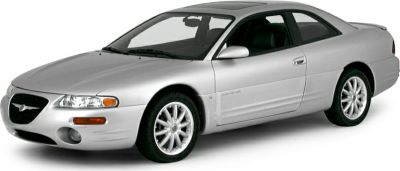 1966 Jaguar E-type 2+2 Dimensions, Size & Specs
1966 Jaguar E-type 2+2 Dimensions, Size & SpecsMeasurements of the 1966 Jaguar E-type 2+2, engineered for optimal performance and comfort
| Dimensions | |
|---|---|
| Length: | 4680 mm184.3 in15.4 ft |
| Width: | 1680 mm66.1 in5.5 ft |
| Height: | 1270 mm50.0 in4.2 ft |
| Ground Clearance: | 140 mm5.5 in0.5 ft |
| Trunk Capacity: | 220 liter7.8 cu ft |
| Weight Specifications | |
| Curb Weight: | 1143 kg2520 lbs |
| Tire Specifications | |
| Rims Size: |
|
The Jaguar E-type 2+2, produced between 1966 and 1975, is an iconic British grand tourer that blends sporty styling with increased practicality thanks to its 2+2 seating layout. This second-generation E-type coupe features a sleek and timeless design with dimensions that provide a balanced presence on the road. Measuring 4680 mm (184.3 inches) in length, 1680 mm (66.1 inches) in width, and 1270 mm (50 inches) in height, the E-type 2+2 maintains a low and aerodynamic profile while offering enhanced passenger space compared to the earlier two-seater variants.
Weighing in at a curb weight of 1143 kg (2520 lbs), the vehicle offers a well-balanced chassis that complements its powerful engine options, promoting agile handling and confident driving dynamics. Despite its focus on performance, the E-type 2+2 provides practical features such as a luggage capacity of 220 liters (7.8 cubic feet), suitable for longer journeys and touring purposes. Ground clearance is modest at 140 mm (5.5 inches), typical for sports coupes of its era, aiding in stability without compromising road presence.
Equipped with 15-inch rims, the Jaguar E-type 2+2 stands as a classic representation of 1960s automotive engineering where style and usability met sportiness. Whether as a collector’s piece or a vintage sports coupe, this generation of the E-type remains admired for its combination of size, design, and driving engagement.
Discover the standout features that make the 1966 Jaguar E-type 2+2 a leader in its class
Have a question? Please check our knowledgebase first.
The 1966 Jaguar E-type 2+2 Coupe measures 4680 mm (184.3 inches) in length, 1680 mm (66.1 inches) in width, and stands 1270 mm (50.0 inches) tall. These dimensions give it a sleek, elongated appearance typical of grand touring cars of that era, while providing more interior space with the 2+2 seating arrangement compared to the 2-seater variants. Its moderate width makes it manageable for urban driving, while the low height emphasizes its classic sports car profile.
The curb weight of the 1966 Jaguar E-type 2+2 Coupe is approximately 1143 kg (2521 lbs). This relatively light weight for a grand tourer contributes to nimble handling and agility on the road, allowing for responsive driving dynamics. The lightweight construction coupled with powerful engine options offered during its production period enhances the overall driving experience, balancing performance with the comfort expected of a 2+2 coupe.
The luggage capacity of the 1966 Jaguar E-type 2+2 Coupe is 220 liters (approximately 7.76 cubic feet). While not extensive by modern standards, this storage space is reasonable given the car's sporty nature and grand touring focus. It accommodates light luggage suitable for weekend trips or short vacations, but may be limited for extended travel with more passengers or larger items. Therefore, it's practical for typical leisure drives or short excursions.
The 1966 Jaguar E-type 2+2 Coupe has a ground clearance of 140 mm (5.5 inches). This relatively low ride height aids in improving aerodynamics and overall driving stability, delivering better handling and performance on smooth roads. However, it means the car may be less suited for rough terrain or speed bumps, requiring cautious driving in urban environments with uneven surfaces or steep driveways.
Yes, the 1966 Jaguar E-type 2+2 Coupe fits comfortably into a standard garage. With dimensions of 4680 mm (184.3 inches) in length and 1680 mm (66.1 inches) in width, it is slightly longer than many modern mid-sized cars but remains well within typical garage size constraints (usually around 6 meters or 20 feet in length and 3 meters or 10 feet in width). Its relatively low height (1270 mm or 50 inches) also ensures ample vertical clearance.
The 2+2 version of the Jaguar E-type, introduced in 1966, is longer and slightly heavier than the earlier 2-seater models. While the 2-seater E-type measures about 4410 mm (173.6 inches) in length, the 2+2 extends to 4680 mm (184.3 inches), providing additional legroom and interior space for rear passengers. Width remains quite similar around 1680 mm (66.1 inches). The extra length primarily benefits cabin comfort without drastically altering the classic silhouette, making it a more practical grand tourer compared to the sportier 2-seaters.
Compared to contemporaries like the Ferrari 365 GT 2+2 or Aston Martin DB6, the Jaguar E-type 2+2 Coupe is slightly more compact, with a length of 4680 mm (184.3 inches) versus roughly 4700-4800 mm for its Italian and British rivals. Its width of 1680 mm (66.1 inches) is also narrower, contributing to a more agile feel. Stylistically, it combines classic long-hood, short-deck proportions with graceful curves iconic to Jaguar, whereas competitors leaned either towards muscular grand touring or elegant luxury. The E-type 2+2 strikes a unique balance between sportiness and practicality.
The 1966 Jaguar E-type 2+2 is equipped with 15-inch rims (approximately 381 mm). These rim sizes were standard for the time and typically paired with bias-ply or early radial tires, providing a balance between ride comfort and handling precision. The relatively moderate wheel size helps maintain the classic aesthetic while contributing to responsive steering and good road feedback, essential for a grand touring coupe that emphasizes driver engagement.
Produced between 1966 and 1975, the Jaguar E-type 2+2 was introduced as a grand touring variant of the iconic E-type sports car. It features a coupe body style with four seats arranged in a 2+2 layout, offering greater practicality and rear passenger space than the classic 2-seater. The model combined elegant design with performance, powered by inline-six or V12 engines depending on the year. It remains a celebrated classic car known for its timeless style and enjoyable driving experience.
The 1966 Jaguar E-type 2+2 Coupe offers a more spacious interior than its 2-seater sibling, particularly by virtue of the extended wheelbase that accommodates rear seats suitable for occasional passengers or extra cargo. While the rear seats are best suited for smaller adults or children, the added practicality distinguishes it from many luxury coupes that remained strictly two-seaters. Compared to other luxury grand tourers of the 1960s, its interior space is competitive though more compact than larger sedans; it focuses on a sporty, elegant driving environment with some added versatility.
Discover similar sized cars.

| Production: | 1994-2000 |
|---|---|
| Model Year: | 1994 |
| Length: | 4760-4850 mm187.4-190.9 in |
| Width: | 1770 mm69.7 in |
| Height: | 1296-1340 mm51.0-52.8 in |
